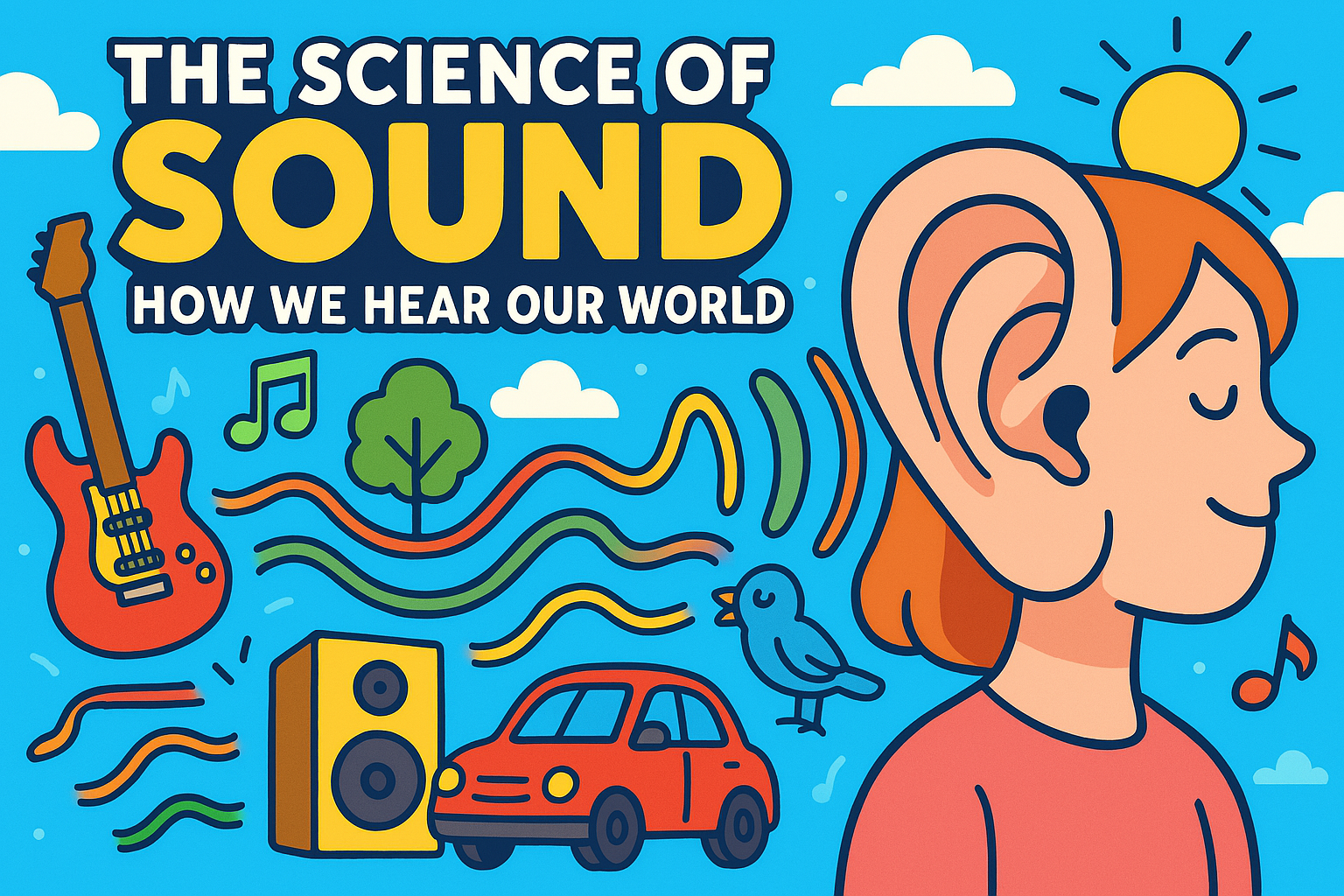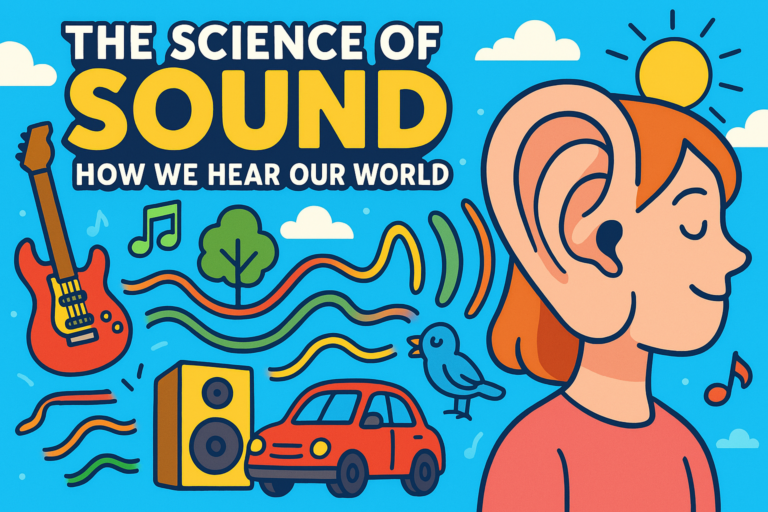The Science of Sound: How We Hear Our World
The Science of Sound: How We Hear Our World
Sound is more than just noise—it’s actually energy moving through the air (or water, or even metal). The science of sound is a branch of physics that studies how this energy travels in waves, how those waves behave, and how we experience them as sound.
When something vibrates—like a drum skin or your vocal cords—it sets off a chain reaction. That vibration pushes nearby particles, which push others, creating a wave that carries energy from one place to another. That’s how you can hear someone clapping across the room! In this article, we’ll explore the physics behind sound: what sound waves really are, how they move, how pitch and loudness work, and how your ears and brain turn these invisible waves into something you understand.
This topic is part of our Info Zone collection. You can read the full topic, once logged in, here: The Science of Sound: How We Hear Our World
You’ll also find a full Lesson Plan and a handy Parent Q & A sheet, for this topic, ready to use..
Members Only
You need to be registered and logged in to access this learning resource and other member only content. It only costs £1.99

